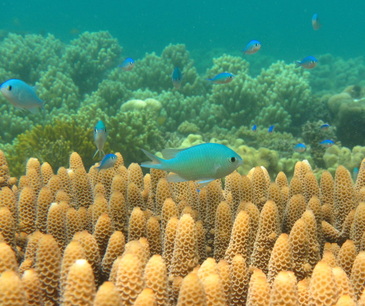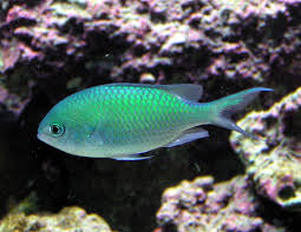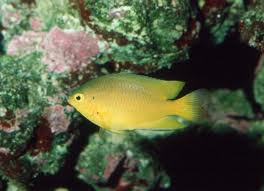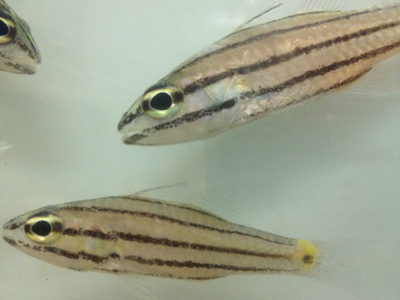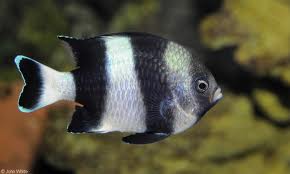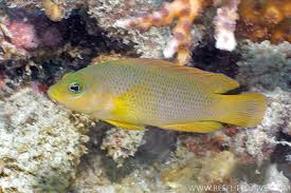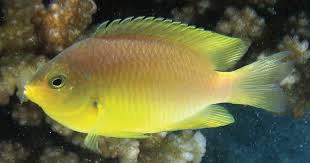RESEARCH THEME - 3
Harnessing geographic gradients and local extreme environments as analogues for
future change
Some of my most recent findings underscore the importance of utilizing biogeographical comparisons (e.g., the thermal gradients along the length of the Great Barrier Reef) as analogues for future climate change. Importantly, I have found that equatorial populations of reef fishes may be most at risk as oceans continue to warm, which may result in biogeographical redistribution of species seeking thermal refuge at higher latitudes where populations have greater capacity to cope with rising temperatures.
- Rummer, J.L., Couturier, C.S., Stecyk, J.A.W., Gardiner, N.M., Kinch, J.P., Nilsson, G.E., Munday, P.L. 2014. Life on the edge: Thermal optima for aerobic scope of equatorial reef fishes are close to current day temperatures. Global Change Biology 20(4):1055-66. doi:10.1111/gcb.12455
One of my recent graduates (Alyssa Bowden) determined changes in gill morphology not due to remodelling but perhaps changes perfusion in populations of coral reef fishes living near the equator.
- Bowden, A.J., Gardiner, N.M., Couturier, C.S., Stecyk, J.A.W., Nilsson, G.E., Munday, P.L., Rummer, J.L. 2014. Alterations in gill structure in tropical reef fishes as a result of elevated temperatures. Comparative Biochemistry and Physiology - A 175, 64-71. doi:10.1016/j.cbpa.2014.05.011
My Ph.D. student (Geoffrey Collins) has been investigating geographically distinct populations of barramundi fish across Australia for differences in their resting metabolic costs and sensitivity to hypoxia.
- Collins, G., Clark, T.D., Rummer, J.L., Carton, A.G. 2013. Hypoxia tolerance is conserved across genetically distinct sub-populations of an iconic, tropical Australian teleost (Lates calcarifer) Conservation Physiology 1, doi:10.1093/conphys/cot029
I have also found evidence that some species can acclimate to near future CO2 levels and linked other responses to naturally fluctuating CO2 levels on highly productive coral reefs.
- Rummer, J.L., Stecyk, J.A.W., Couturier, C.S., Watson, S-A., Nilsson, G.E., Munday, P.L. 2013. Elevated CO2 enhances aerobic scope of a coral reef fish. Conservation Physiology 1, doi:10.1093/conphys/cot023
- Couturier, C.S., Stecyk, J.A.W., Rummer, J.L., Munday, P.L., Nilsson, G.E. 2013. Species specific effects of near-future CO2 on the respiratory performance of two tropical prey fish and their predator. Comparative Physiology and Biochemistry - A 166:482–489. doi:10.1016/j.cbpa.2013.07.025
- Heinrich, D.D.U., Rummer, J.L., Morash, A.J., Watson, S-A., Simpfendorfer, C.A, Heupel, M.R., Munday, P.L. A product of its environment: The epaulette shark (Hemiscyllium ocellatum) exhibits physiological tolerance to elevated environmental CO2. Conservation Physiology (accepted 3 Aug. 2014).
Some of this I am exploring later this year at the Centre de Recherches Insulaires et Observatoire de l’Environnement (CRIOBE) laboratory on Moorea, French Polynesia with Dr. Serge Planes and Dr. Johann Mourier later this year.
I recently collaborated with a team of ecologists, behavioural biologists, and fish community experts with funding from the National Geographic Society to investigate the effects of long-term exposure to elevated CO2 in fishes living in natural CO2 seeps in Papua New Guinea. Our findings represent a profound contribution to our field as we determined that the natural fish communities occupying reefs near cool volcanic seeps, despite exhibiting some behavioural impairment due to the CO2, were seemingly resilient to these conditions, being no different in numbers, diversity, or physiology than populations on nearby reefs unaffected by the CO2 seeps.
- Munday, P.L., Cheal, A., Dixson, D.L., Rummer, J.L., Fabricius, K. 2014. Behavioural impairment in reef fishes caused by ocean acidification at CO2 seeps. Nature Climate Change 4, 487-492. doi:10.1038/NCLIMATE2195
Several media stories and one video documentary have resulted from this work.
For links to other published journal articles and book chapters not listed here, please check out my Publications page.
For links to other published journal articles and book chapters not listed here, please check out my Publications page.
